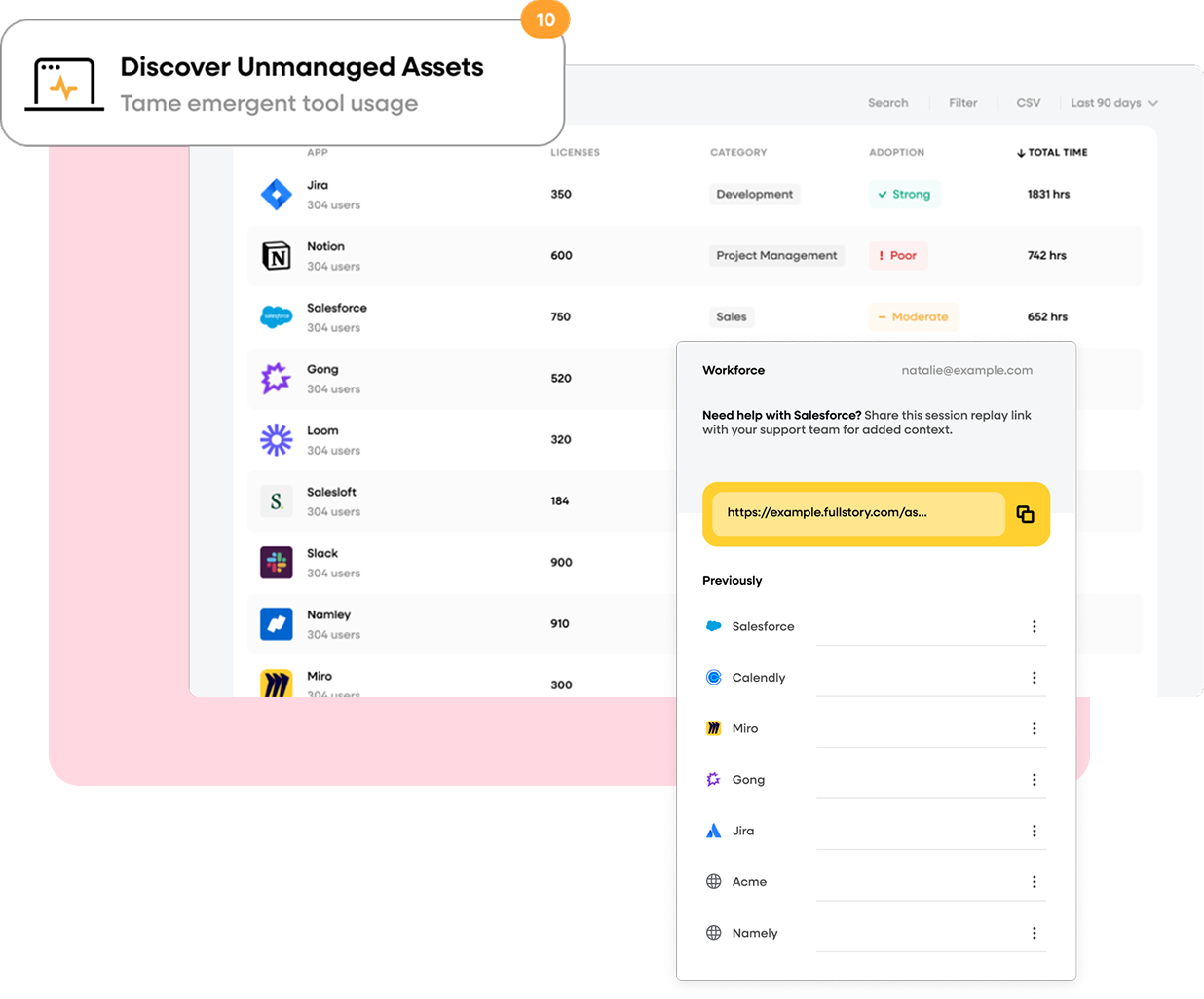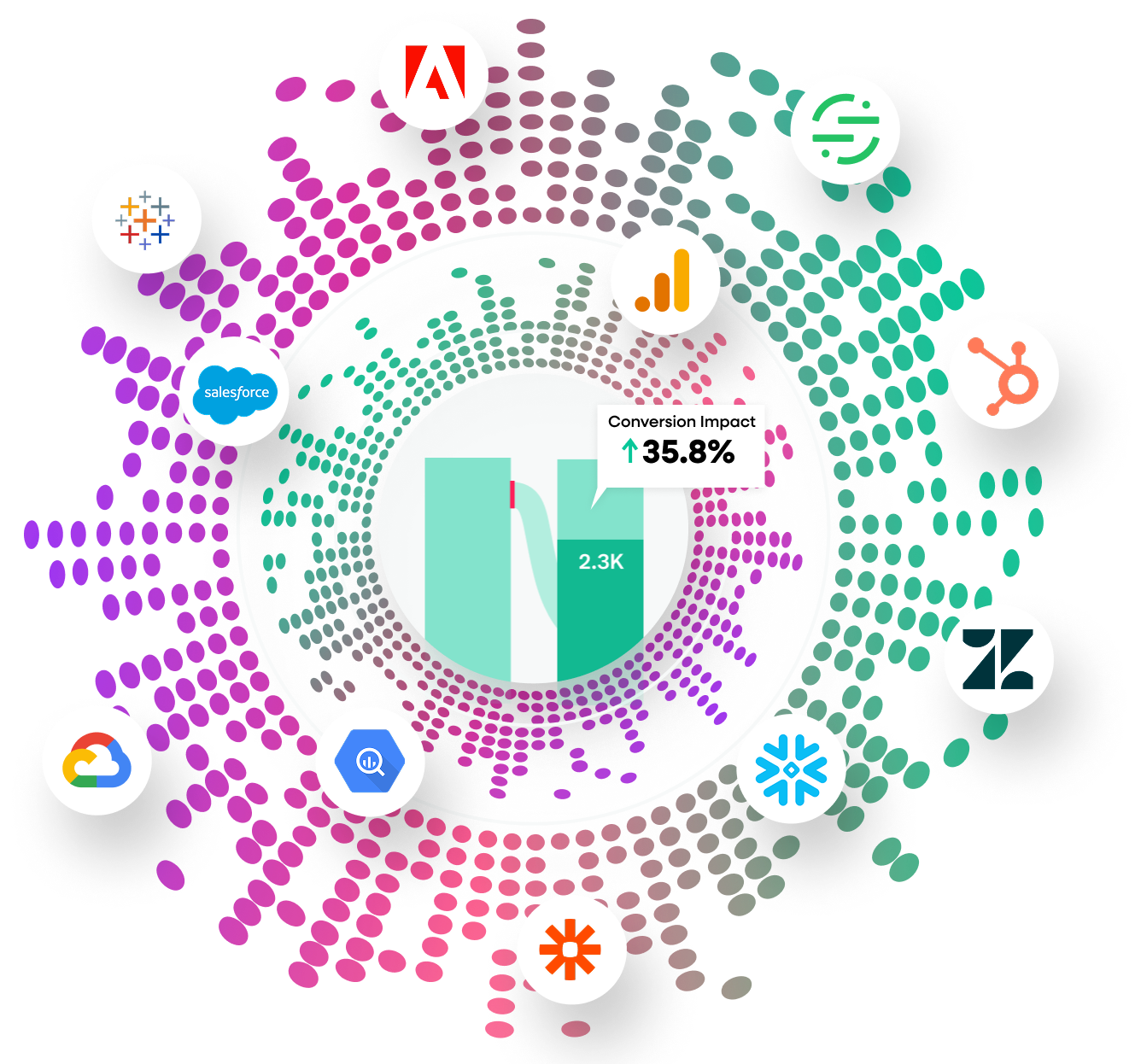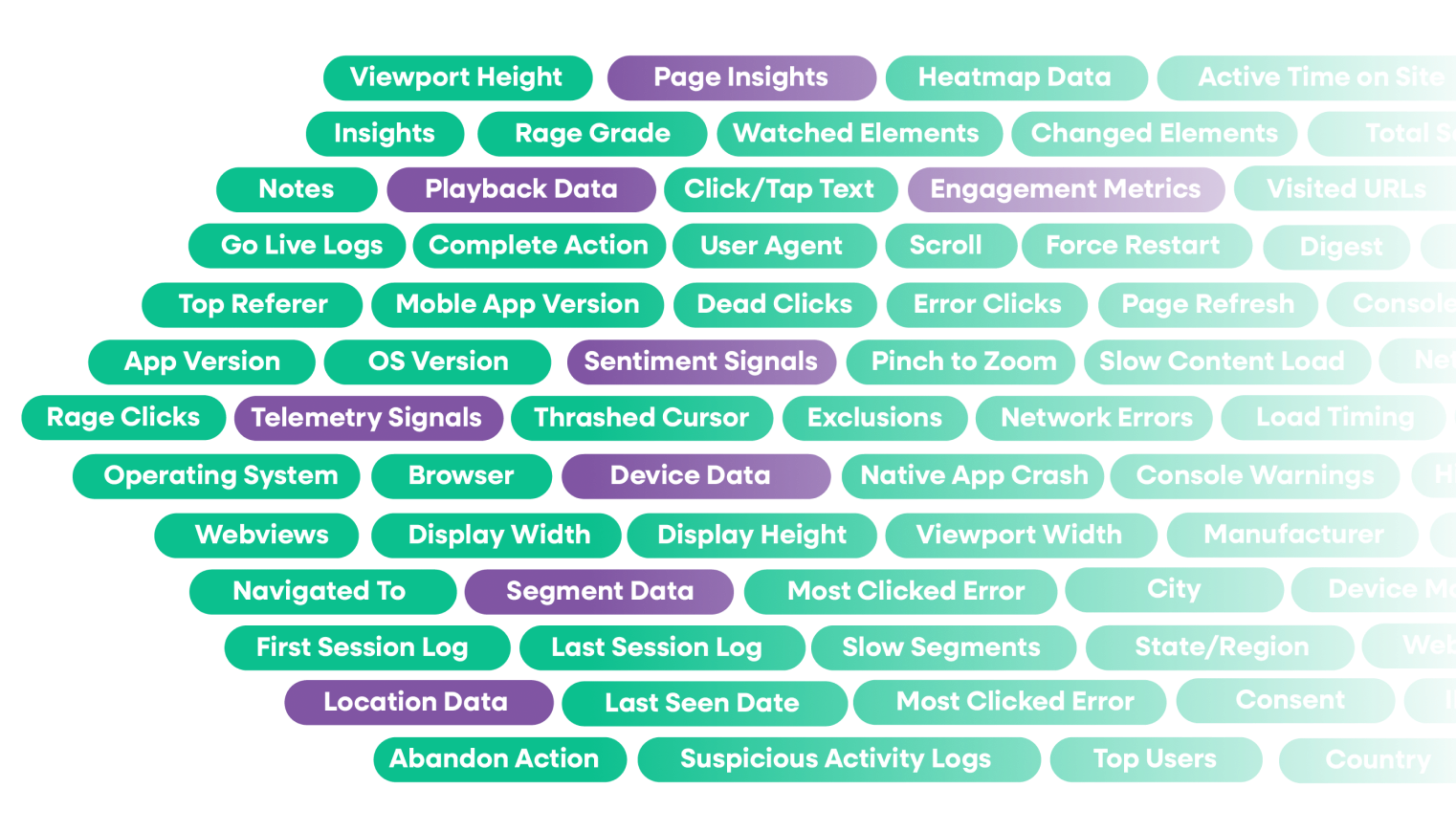The behavioral data platform
The data you need to win customers for life
From understanding your customers to optimizing workflows, Fullstory’s platform provides the insights and tools you need to create personalized experiences and drive impactful outcomes.
Three ways to activate behavorial data at scale
Unlock deeper insights to drive conversions, optimize, and increase satisfaction. Fullstory Analytics surfaces behaviors within mobile and web experiences to reduce friction and keep customers coming back.
✦ Optimize customer journeys
✦ Identify and resolve experience issues
✦ Unify user journeys across devices
Give your teams the insights they need to improve productivity, streamline workflows, and enhance the digital employee experience. Fullstory Workforce helps you optimize internal tools and reduce frustration for better results.
✦ Improve employee workflows
✦ Streamline IT support and troubleshooting
✦ Cut unnecessary spend

Integrate Fullstory’s behavioral data into your existing systems for deeper analysis and more personalized experiences. Fullstory Anywhere unlocks the full potential of your data, enabling stronger business outcomes.
✦ Analyze data in-depth and integrate with your existing stack
✦ Create personalized experiences with real-time signals

StoryAI puts powerful insights at your fingertips. No more sifting through complex data. Get clear, actionable recommendations that help you make smarter decisions, faster. Let AI do the heavy lifting so you can focus on what really matters.
It’s not magic—it’s Fullcapture™
Solve your most complex challenges with precision
Understand customer behavior
Gain insights into customer actions, uncover friction points, and personalize experiences with Fullstory’s behavioral data.
Improve digital experiences
Identify and fix pain points in real time, creating seamless, engaging experiences that keep customers coming back.
Drive intelligent automation
Use real-time behavioral data and AI to automate personalized content and offers, boosting engagement effortlessly.
Accelerate data-driven decisions
Make smarter, faster decisions with clear, actionable insights from Fullstory’s behavioral data and AI-driven recommendations.
Additional resources
Fullstory expands its portfolio with new AI-driven solutions, helping teams collect, analyze, and act on behavioral data faster and more effectively.
Discover the leading enterprise behavior analytics tools built for scale, precision, and actionable behavioral data—one of which is a clear standout.
Smarter AI starts with better data. Gauge your AI maturity in strategy, data quality, and business impact, and spot what’s holding you back.
Discover how WorldRemit uses Fullstory to accelerate innovation and increase conversions.
See how Pizza Hut uses Fullstory to optimize its global customer experience in over 110 markets.
Discover how MOO uses Fullstory to resolve issues faster, boost conversions, and reduce customer journey drop-offs.
Behavioral data that means business.
Turn behavioral insights into action with Fullstory Analytics. Identify friction, optimize experiences, and empower teams to make smarter, real-time decisions that drive impact.





